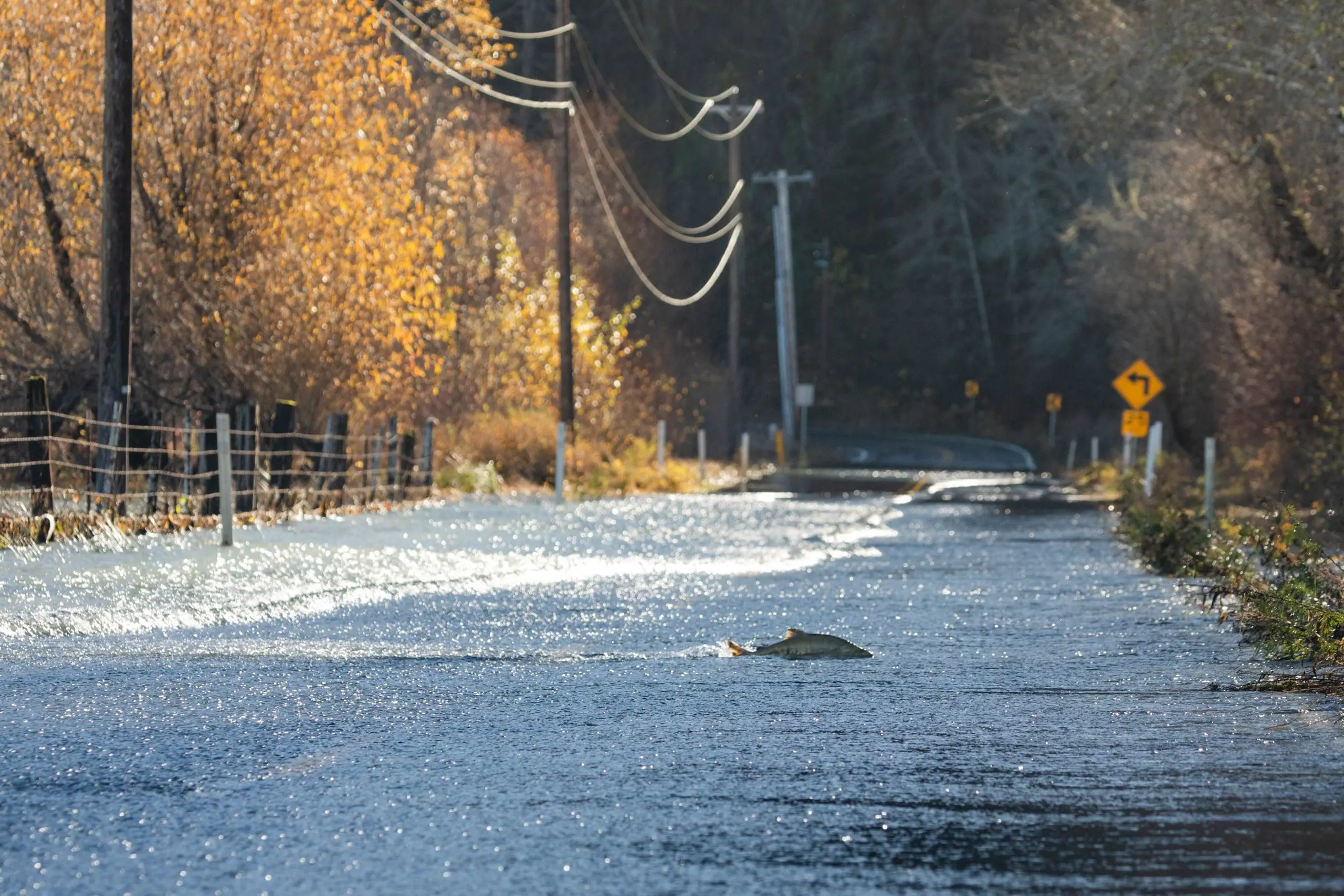
Salmon and Floods
Our hearts are with everyone affected by the flooding in Washington and British Columbia this week. Intense rains and floods in the Northwest are becoming more common, a consequence of climate change. Major flooding is also a concern for struggling salmon populations. Fast-moving floodwaters can scour riverbeds, washing away salmon nests and juveniles in the gravel. At the same time, heavy loads of sediment washing into streams from runoff or landslides can smother eggs and fry.
Pacific salmon are adapted to dynamic rivers where flooding is a natural ecological process. Floods help shape habitat diversity that salmon need in their spawning rivers, creating log jams, side channels, and wetlands that are part of a healthy ecosystem. Human changes to the landscape, however, make it harder to absorb the impacts of flooding, at the same time as the warming climate means more rain and more severe floods. Deforestation makes hillsides more prone to erosion and landslides, which dump sediment into spawning habitat. Former floodplains drained for development or farming mean less room for floodwaters to spread out and slow down, putting both human infrastructure and salmon nests in harm’s way.

Along the Skokomish River, near our Hood Canal field station, the shallow stream channel naturally overflows during heavy fall rains. Today, this means the increasingly common sight of salmon crossing flooded roads in the valley. When the floodwaters recede, these fish are often stranded, unable to find their way back to the stream and their spawning grounds. For salmon populations already at risk, the combined effects of development and increasing floods are cause for serious concern.
In addition to taking action to limit climate change, communities and scientists are using green infrastructure to increase flood resilience for both salmon and people. Habitat restoration projects combat erosion and create areas where water can slow down and be safely stored in wetlands. Programs like Floodplains by Design work locally to protect farms and infrastructure from flooding, improving salmon habitat at the same time. Urban rain gardens store and clean stormwater before it reaches streams. These strategies work with natural systems to manage the risks from flooding, with mutual benefits for salmon runs and sustainable communities.
LLTK is concerned about the impacts these events have on salmon and steelhead as we face the reality that they are occurring more frequently. That is why we work with the Puget Sound Salmon Recovery Council, Tribes, local governments and businesses, our state legislature and Congress to identify and provide funding for the most important actions to help salmon recover and thrive in a changing climate. It’s also why we are building regional and international partnerships to better understand the impacts of climate change in both freshwater and marine environments. These recent events are a reminder of the force of nature, and how our shared decisions can affect outcomes for salmon and people.
Read more: 10 ways YOU can help salmon, including by starting your own rain garden.